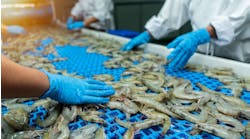Craft brewers are artists, creating inspired recipes for unique brews and seasonal craft brews.
The beauty of craft beer is its originality; and that presents special productivity challenges. Productivity comes from repeatability, doing the same thing over and over again. But that’s not what craft brewers do naturally.
So: how can brewers support the creative process without slowing production?
With a scalable brew house control system that provides the right tools for the brewmaster, performs exceptionally well – and also looks professional. After all, it’s not unusual for a craft brewer to showcase part of the brewing system for patrons.
Standardizing creativity
While the recipes might change, the brewmaster can brew great craft beer efficiently and consistently and—this is important—they can do it in small batches.
This requires combining a reliable brewing system with flexible recipe management and control system which enables the brewer to be creative, modify existing recipes, and try new types of brews.
An intuitive user interface makes a difference, because it allows non-technical users to understand the system without being a computer programmer. Anyone familiar with the brewing process can navigate the interface and quickly be brewing craft beer.
This is industry changing because now, instead of figuring out a complicated system, brewers can do what they do best: create craft beer.
Here are links several stories of how an efficient brew house control system can help craft brewers gain greater control over processes:
- Sleeman Breweries increased production capacity by 50 percent within two weeks with a virtualized process automation - going from eight brews to 12 brews per day.
- Full Sail Brewing moved to a more automated brewing system that reduced the cycle time by 50% and increased capacity by 25%. They also decreased water use by one million gallons annually.
- Lakefront Brewery increased first-pass yield and throughput with new filling equipment, increasing production speed by 50 percent. The new filler enabled faster product changeovers.
As the craft brewer market continues to expand – right now we have more than 4,000 craft breweries in the U.S. alone—brewers look at automation to meet growing demand. No longer should automation be seen as the killer of creativity.
Integrating systems like brewing, bottling and packaging on standard process control hardware and software platforms does not affect the craftsmanship required to make a beautiful brew. In fact, just the opposite – taking the guesswork out of the process gives the brewmaster more time to focus on what’s important: the artistry.






